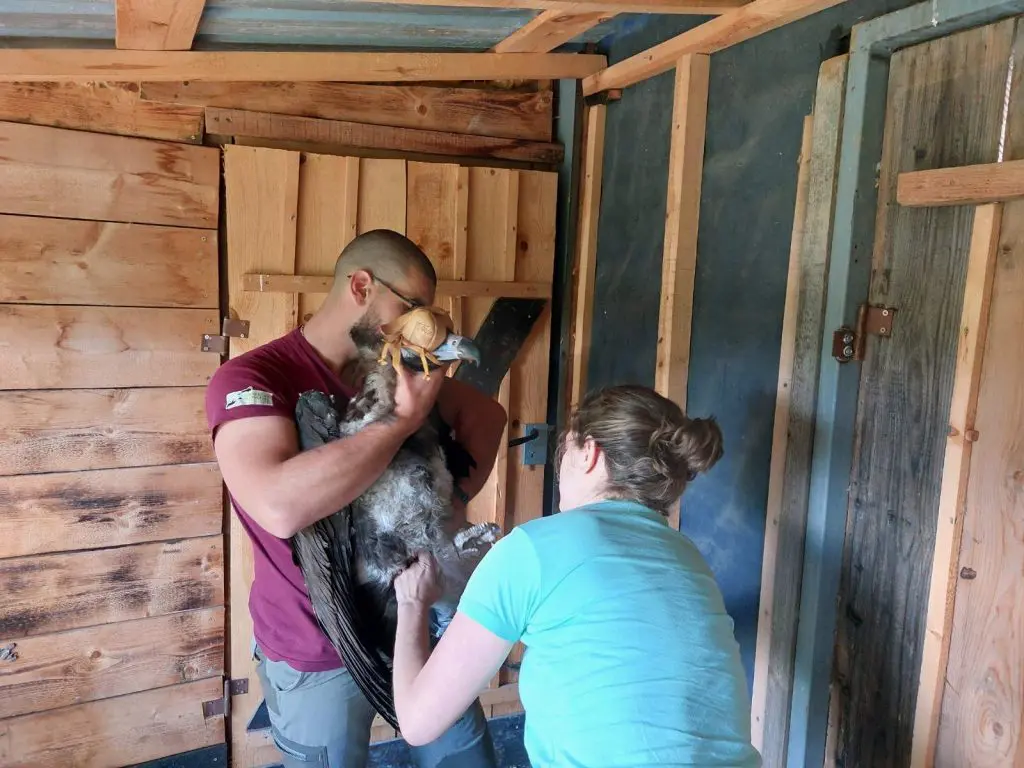
If you think the holiday season is over, think twice. At least, it’s not over for this young Cinereous Vulture pair that took their vacation time in September. The pair set on a 3-week aerial adventure journey over the Rhodope Mountains.
Тhe travels of the young pair
Both vultures were tagged in the Dadia-Lefkimi-Soufli Forest National Park as immature birds in northern Greece in 2018 as part of our LIFE Re-Vultures project. The data is already giving us insight into vulture behaviour and will help ongoing vulture conservation efforts in the area.
It seems that the pair shares the same taste for adventure as they have been flying for more than 20 days, exploring and roosting together around the Rhodopes area. They flew over a large territory in Greece and even crossed the border and ventured in Bulgaria. This year during the breeding season, the young vultures have been observed several times by the researchers of the Dadia National Park Management Body using an old, unoccupied Cinereous Vulture nest, but unfortunately did not decide to nest. There is a hope of having a Cinereous Vulture chick in 2020 if the pair is still together.
Only Cinereous Vulture Colony in the Balkans

The Rhodope Mountains are home to the only breeding colony of the Cinereous Vulture in the Balkans; around 30 pairs breed yearly in the Dadia National Park in the Greek part of this mountain range. The number of breeding pairs has been stable and even slightly increasing over the past few years.
Cinereous Vulture behaviour
The nomadic behaviour of Cinereous Vultures is not well-known. Adult Cinereous Vultures are generally thought to be sedentary birds, rarely staying far from their home territory where they breed. The GPS tagging and tracking currently being carried out in the frame of the LIFE Re-vulture project is demonstrating that some juvenile Cinereous Vultures have begun to challenge that conception. In 2018, a tagged juvenile Cinereous Vulture called Helena travelled nearly 2200 kilometres in 11 days, flying directly over both the Southern Carpathians rewilding area in Romania and the Rhodope Mountains rewilding area in Bulgaria. Another fantastic flight was successfully completed by Lefteris, who travelled around 1100 kilometres in 11 days, exploring Bulgaria’s Central Balkan National Park before returning to Dadia. Chrysoula, an immature bird made probably the most ambitious Balkan trip through 5 countries, covering a distance of over 3200 km. She flew over North Macedonia and spent one day in Albania which is the first record of the species in the country for decades.
It is thought that the tendency of these birds to travel outside their home range and explore new areas is connected with a desire to locate other vulture colonies, and to find new areas with good feeding and breeding opportunities.
So far, the LIFE Re-Vultures project equipped 20 satellite transmitters on Cinereous Vulture in Dadia National Park, in the Greek part of the Rhodope Mountains. These transmitters will provide important scientific data about the distribution, movements and possible threats, which will further help identify future conservation actions for the species in this region.
Adapted by an article in Rewilding Rhodopes
LIFE Re-Vultures

Starting in 2016, the five-year LIFE RE-Vultures project was developed by Rewilding Europe, in collaboration with the Rewilding Rhodopes Foundation the Bulgarian Society for the Protection of Birds, WWF Greece, the Hellenic Ornithological Society and us here at the Vulture Conservation Foundation. The aim of the project is to support the recovery and further expansion of the populations of Cinereous and Griffon Vultures in the cross-border region of the Rhodope Mountain by improving natural prey availability, monitoring movements of birds to help understand the threats they face and carrying out activities that will reduce the mortality of the populations from threats such as illegal wildlife poisoning and collisions with electricity infrastructure.




